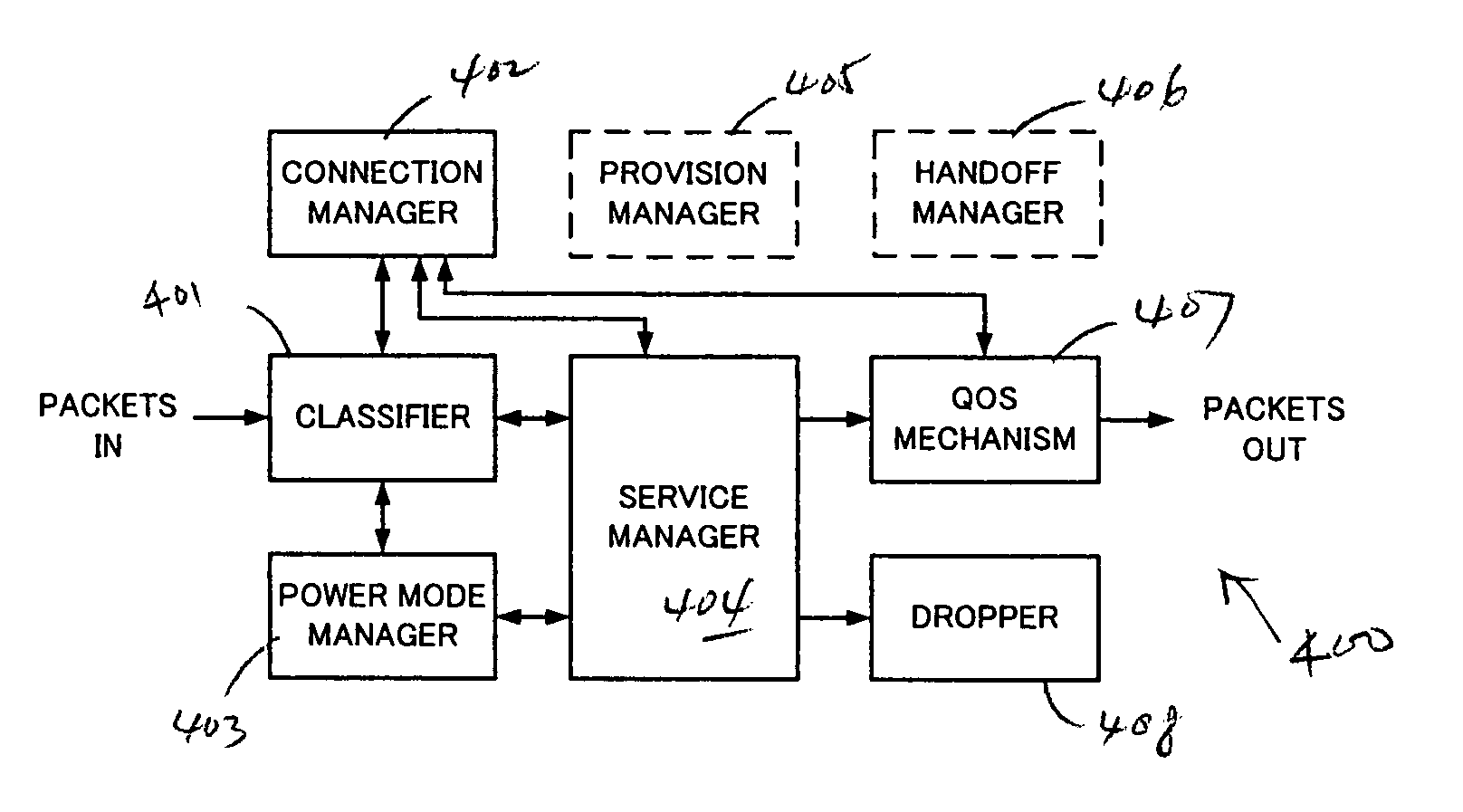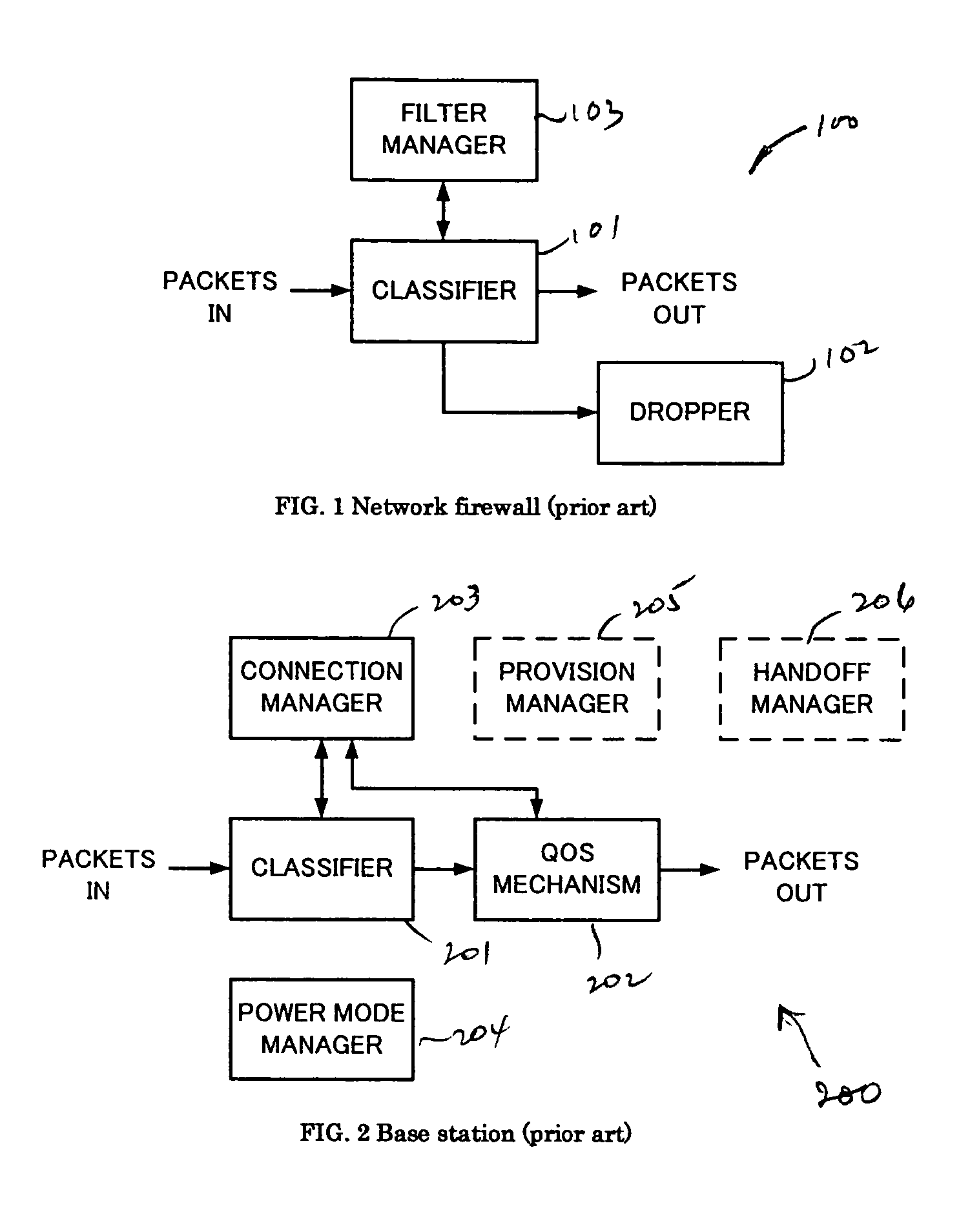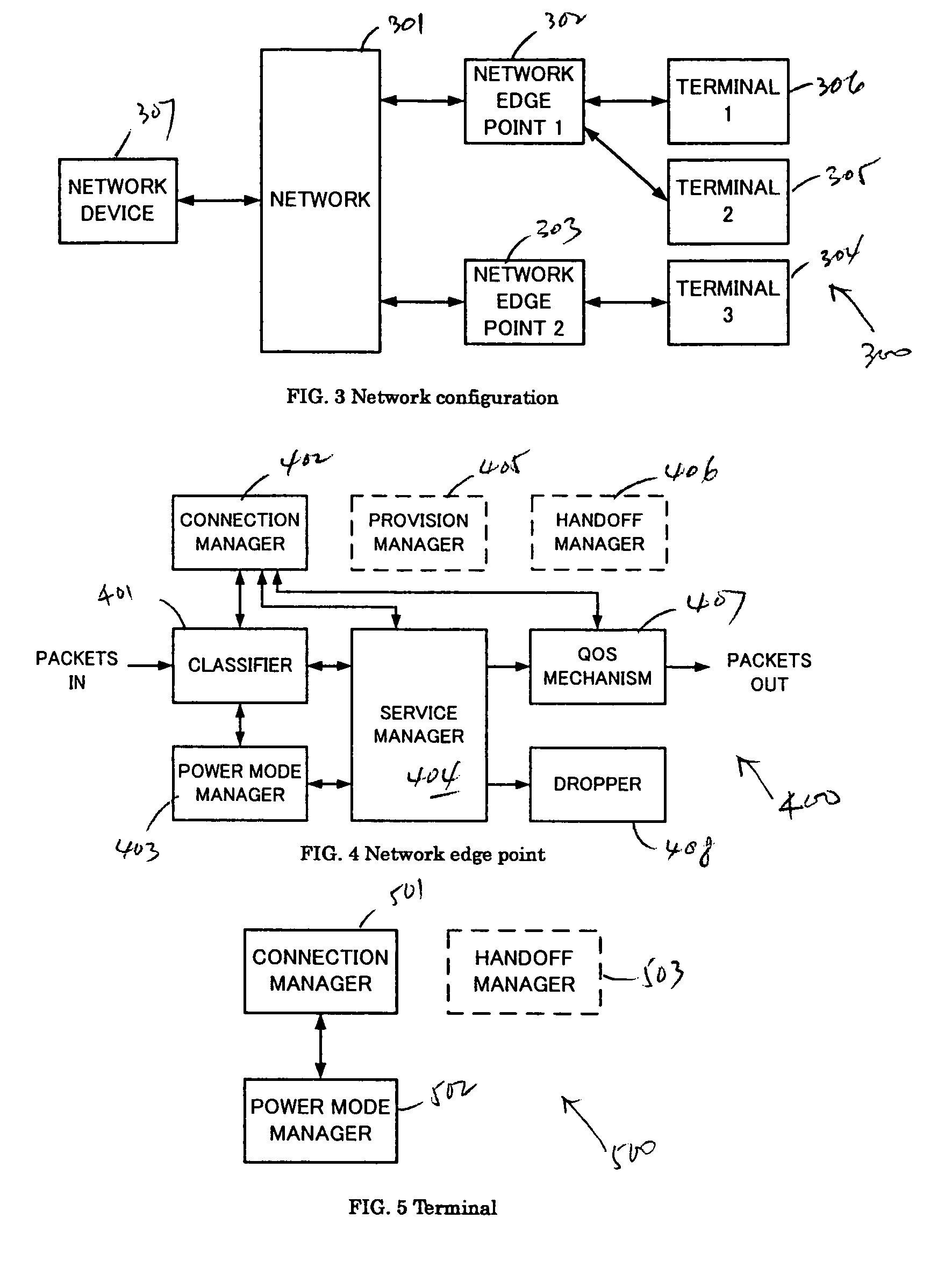Power mode aware packet communication method and apparatus
a packet communication and power mode technology, applied in the field of data network protocols, can solve the problems of terminal lack of control of both packet disposition and packet arrival, the inability of the wireless terminal to control whether or not packets arrive, etc., to achieve the effect of low overhead and power efficiency
- Summary
- Abstract
- Description
- Claims
- Application Information
AI Technical Summary
Benefits of technology
Problems solved by technology
Method used
Image
Examples
Embodiment Construction
[0033]The invention provides a power mode aware packet communication system, which avoids delivering undesired packets or alerting wireless terminals unnecessarily, thereby saving power. The present invention is applicable to a communication system, such as communication system 300 of FIG. 3, which includes network 301. As shown in FIG. 3, network 301 is accessible through network edge points or access points 302 and 303. FIG. 3 also shows network device 307, which is directly attached to network 301, and terminals 304, 305 and 306, which are connected to network 301 through network edge points 302 and 303. Network 301 may be a global network, such as the Internet, a metropolitan area network (MAN), a wide area network (WAN), or a local area network (LAN). Alternatively, network 301 may include also a core network, a backbone network, a backhaul network, or an access network. The present invention is applicable to communication between terminals coupled to the same network edge poin...
PUM
 Login to View More
Login to View More Abstract
Description
Claims
Application Information
 Login to View More
Login to View More - R&D
- Intellectual Property
- Life Sciences
- Materials
- Tech Scout
- Unparalleled Data Quality
- Higher Quality Content
- 60% Fewer Hallucinations
Browse by: Latest US Patents, China's latest patents, Technical Efficacy Thesaurus, Application Domain, Technology Topic, Popular Technical Reports.
© 2025 PatSnap. All rights reserved.Legal|Privacy policy|Modern Slavery Act Transparency Statement|Sitemap|About US| Contact US: help@patsnap.com



